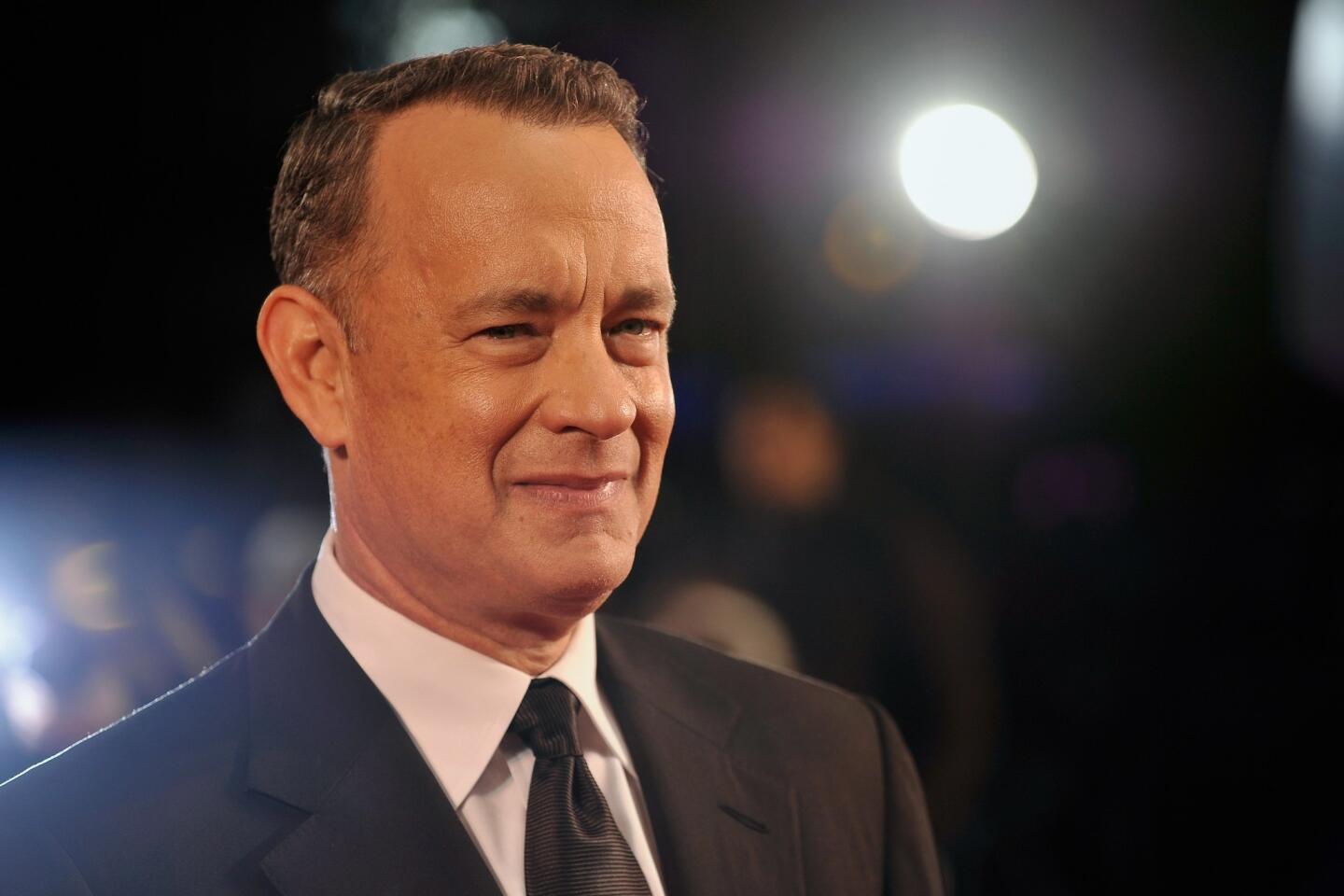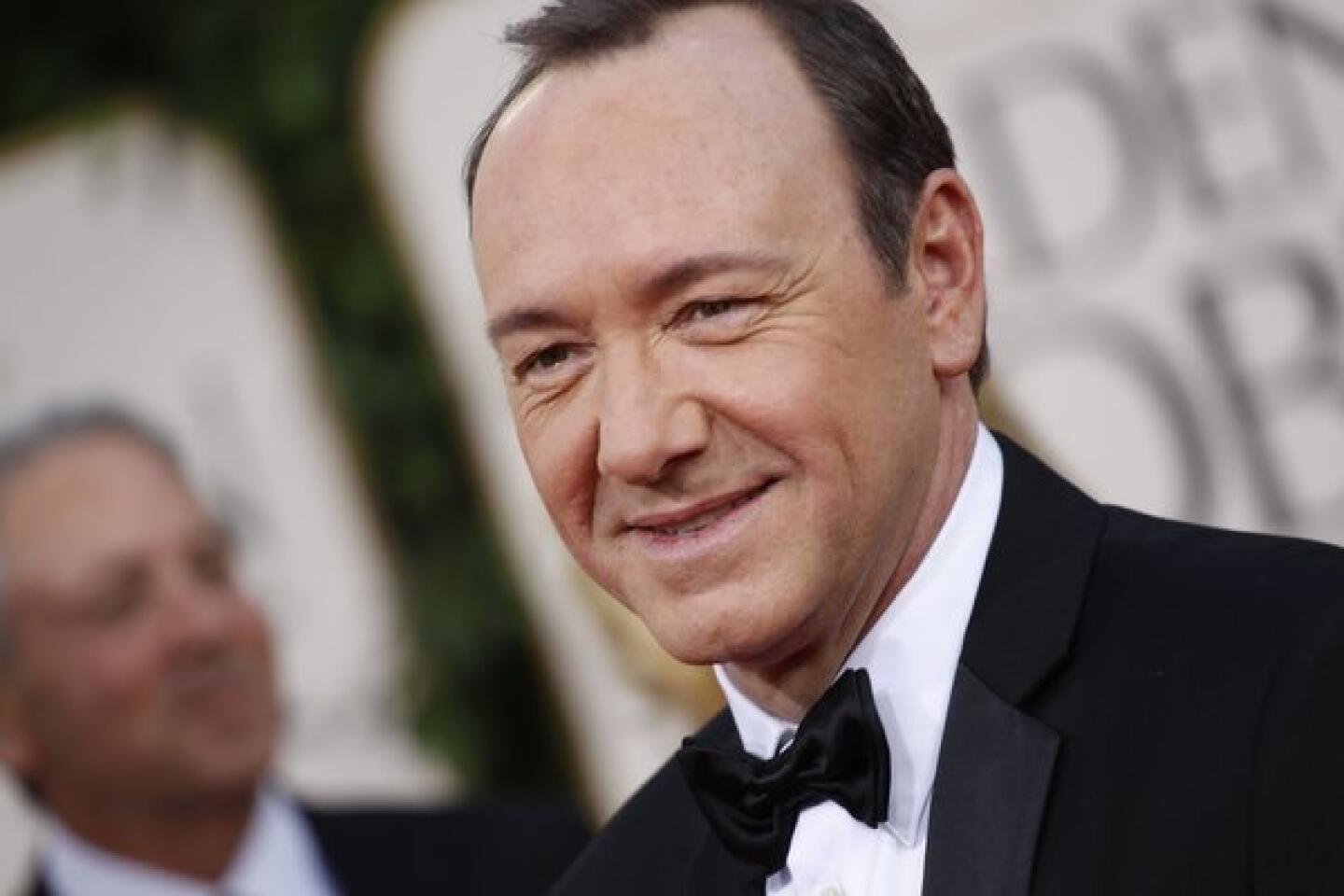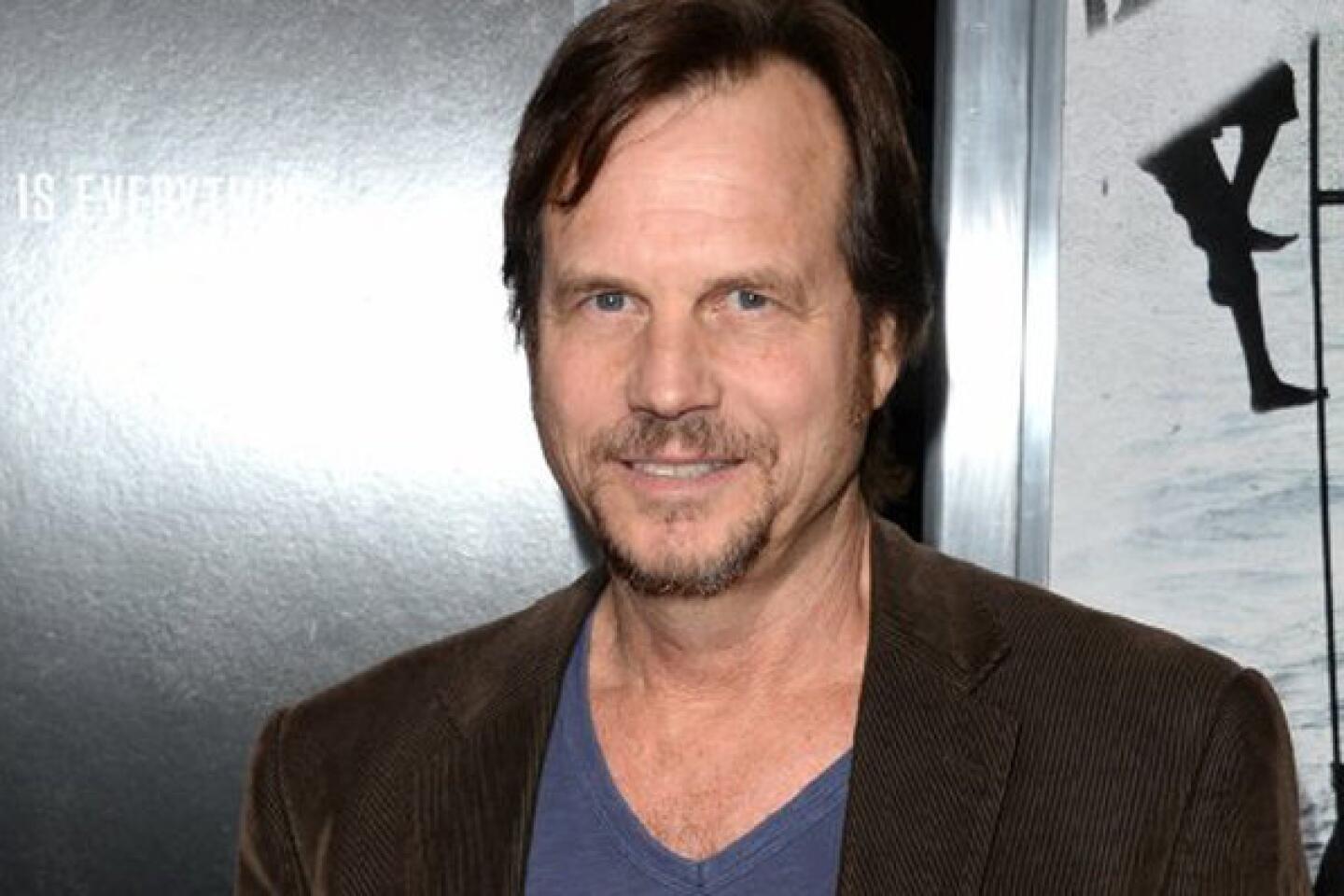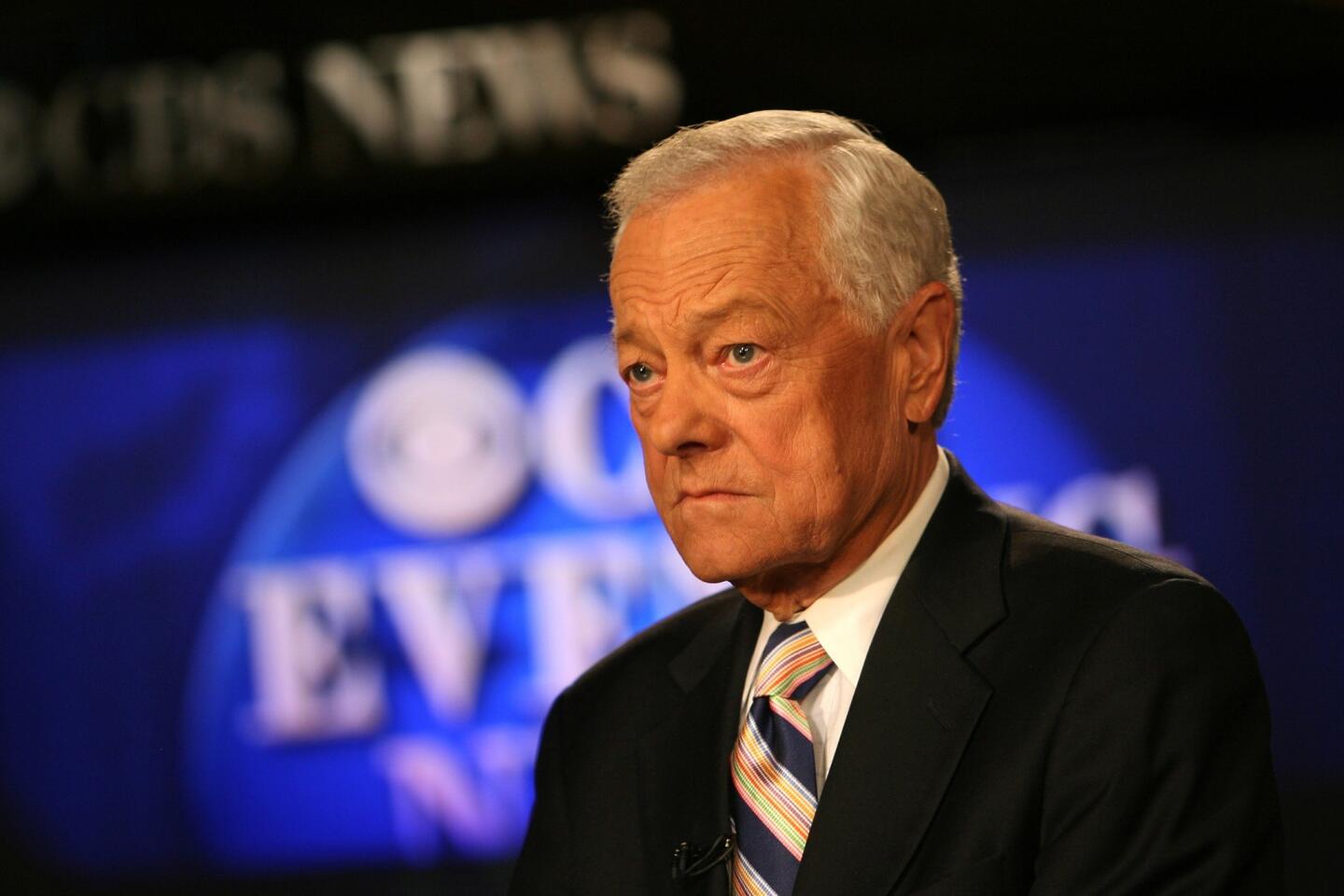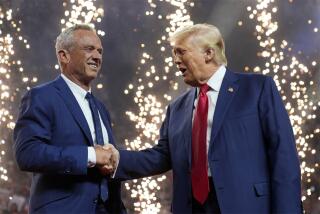TV rewinds Kennedy assassination, 50 years later
- Share via
On the afternoon of Friday, Nov. 22, 1963, the turgid melodrama of “As the World Turns” was suddenly interrupted by grave news from the real world. In Dallas, three shots had been fired at President John F. Kennedy’s motorcade. Fifty-eight minutes later, a visibly moved Walter Cronkite would confirm the unthinkable: The president was dead.
For the ensuing three days, Americans gathered around their televisions in a rite of collective mourning as the three broadcast networks abandoned their regularly scheduled programming to provide uninterrupted news coverage. From Nov. 22 through 25, 1963, 96% of TV-owning households tuned in for an average of more than 31 hours, apiece, and a record-setting 41.5-million television sets were in use during the president’s funeral Monday afternoon.
This type of blanket coverage was unprecedented at the time — CBS had become the first network to expand to a 30-minute news broadcast just two months earlier — and would be replicated only after the Sept. 11 attacks 38 years later.
Television eventually returned to normal, of course, even if the popular imagination never completely did. Five decades after his death, Kennedy remains a fixture on the small screen, providing dramatic inspiration for shows such as “Mad Men” and fodder for hundreds of made-for-TV movies and documentaries.
Fittingly, the 50th anniversary of the assassination will be commemorated by the medium it helped define, because a veritable avalanche of JFK-related programming is scheduled to hit the airwaves in the coming weeks. CBS, NBC and PBS have prime-time specials in the works, as do the cable news outlets and a host of other channels, including History, Discovery, National Geographic and Discovery.
Whether because of lingering questions about the assassination, the perception that JFK’s death marked the end of postwar optimism and the beginning of the ‘60s, or the simple power of the Kennedy mystique, television cannot seem to get enough of the so-called Camelot era.
“The four days remain imprinted in our minds, as do the significant moments that you see and re-see. Even if you were not alive in November ‘63, certainly you’ve experienced the television moments of it and are still grappling with what it means,” said Ron Simon, curator of the Paley Center for Media in New York.
It seems there’s a flavor of Kennedy coverage for every palate, from “Letters to Jackie” on TLC for first-lady fanatics to “JFK: The Smoking Gun,” for the more conspiracy-minded, on Reelz. If television provided a way to collectively mourn a leader’s death in 1963, today’s cacophonous medium inevitably offers us dozens of ways to remember.
PHOTOS: John F. Kennedy on screen
The retrospective began at last month’s Emmy Awards, where Don Cheadle described the assassination as “the moment when the television generation came of age,” then introduced “American Idol” star Carrie Underwood, who performed the 1965 Beatles hit “Yesterday.”
The awkward tribute illustrated the difficulty of revisiting this chapter in American history in a way that feels fresh, appropriate and relevant, particularly for a younger generation of viewers — a challenge also faced by producers of the coming deluge of Kennedy-related programming.
One time-honored approach is to involve big-name celebrities, however indirectly. CNN has “The Sixties: The Assassination of President Kennedy” (Nov. 17), the first installment of a 10-part documentary series produced by Tom Hanks, who will also appear, along with Steven Spielberg, in NBC’s “Tom Brokaw Special: Where Were You?” (Nov. 22).
Hanks notwithstanding, the JFK project with the most name recognition may be “Killing Kennedy,” premiering Nov. 10 on National Geographic Channel and adapted from the nonfiction bestseller by Bill O’Reilly and Martin Dugard.
PHOTOS: How TV reacted to JFK’s assassination
The film, starring Rob Lowe as the ill-fated president and Ginnifer Goodwin as the long-suffering first lady, hopscotches through the major events of Kennedy’s abbreviated term in the White House (Bay of Pigs, the Cuban Missile Crisis) in between scenes of his womanizing. More illuminating, at least to the average viewer, will be the film’s depiction of Lee Harvey Oswald (Will Rothhaar), especially his alleged attempt to assassinate the far-right-wing zealot Gen. Edwin Walker and his tragically close brushes with the FBI.
In a decision that will surely draw jeers from certain corners of the Internet, “Killing Kennedy” hews closely to the Warren Commission’s official version of events. “This is not a conspiracy-theory story, it’s based on what’s known and what’s proven,” said Howard Owens, president of National Geographic Channels.
But the Grassy Knoll will also have its moment in the spotlight (as arguably it should, given that only 24% of Americans believe Oswald acted alone, according to an AP-GfK survey conducted in April). Reelz, the obscure cable network that made headlines in 2011 when it acquired the History castoff “The Kennedys,” has “JFK: The Smoking Gun,” a documentary (of sorts) airing Nov. 3 which posits that the fatal shot to Kennedy’s head was accidentally fired by Secret Service Agent George Hickey. (Appropriately, the network will also broadcast Oliver Stone’s “JFK,” the urtext of Warren Commission skepticism.)
Other specials, including CNN’s “The Sixties: The Assassination of President Kennedy” and “Fox News Reporting: 50 Years of Questions: The JFK Assassination,” will take a more measured look at the findings of the commission in 1964.
“Nova: Cold Case JFK,” airing Nov. 13 on PBS, uses cutting-edge forensic technology to address some of the more persistent pro-conspiracy arguments, like the contention that only a “magic bullet” could have passed through Kennedy and Texas Gov. John Connally and remained intact.
Those interested in Kennedy’s life and legacy, rather than the endlessly contested circumstances surrounding his death, are better served by “American Experience: JFK,” also on PBS. Drawing extensively on recent scholarship, particularly that of historian Robert Dallek, the four-hour documentary will air in two parts on Nov. 11 and 12. (It was expanded after a two-hour edit was deemed too cursory.)
The first half focuses on Kennedy’s life before the White House, charting his evolution from sickly scion to World War II hero to playboy senator, while the second chronicles his tumultuous 1,000 days in the White House. The film also delves into lesser-known aspects of the president’s biography, particularly his struggle with Addison’s disease and debilitating back problems.
What “American Experience: JFK” does not do, however, is brood over the events in Dealey Plaza , which are skipped entirely. “It was a very conscious decision,” executive producer Mark Samels said of the omission. “We purposely wanted to do an ellipsis around that.”
“JFK: The Final Hours,” also on National Geographic, takes the opposite tack, recounting in minute detail the president’s barnstorming trip across Texas and featuring interviews with many of the admiring well-wishers who greeted him (it’s narrated by Bill Paxton, who as an 8-year-old boy stood outside Kennedy’s Fort Worth hotel). It is loaded with surprisingly poignant trivia, like that Kennedy spent the last night of his life in a room decorated with a Van Gogh.
“The Day Kennedy Died,” airing on Smithsonian Channel Nov. 17 and narrated by Kevin Spacey, follows a similar timeline, though it focuses on eyewitnesses to the crime and its aftermath. “To hear from people who had their eyes to the keyhole, not journalists one step back, not experts, not politicians but people who were primary witnesses, I think you get a special vitality from that,” said director Leslie Woodhead.
The film consists almost entirely of archival footage and contemporary interviews with ordinary people who will forever be tied to one of the most notorious days in American history. We hear from Clint Hill, the heroic Secret Service agent who leapt onto the presidential limousine after the first shots were fired, and Buell Frazier, the 19-year-old co-worker who gave Oswald a ride to the Texas School Book Depository that fateful morning, among others.
“I think what I understood more deeply than I had done seeing it from afar was just how it changed individual lives,” said Woodhead, “how it really got inside people.”
PHOTOS: John F. Kennedy on screen
The glut of coverage, which rivals that surrounding the 10th anniversary of the Sept. 11 attacks two years ago, prompts a number of questions: When it comes to an event as cataclysmic as the assassination of JFK, is it ever possible to overdo it? And after 50 years and countless documentaries, movies and miniseries, what is the purpose of revisiting the tragedy once again?
Barbie Zelizer, author of “Covering the Body: The Kennedy Assassination, the Media, and the Shaping of Collective Memory,” suggests our fixation with JFK is driven by a desire to achieve closure on an event that defies comprehension. “We’re not good at stories without ends,” she said. “Americans like our history neat and tidy, and the Kennedy assassination absolutely messes that up.”
But, Zelizer said, the commemoration is productive in creating “a shared sense of ourselves.”
In an era of ever-increasing fragementation, on TV and in the culture at large, this urge to relive a moment of national unity, albeit a tragic one, is understandable.
“The assassination was a shared national experience for the first time,” said Tom Brokaw. “You could live in the most remote parts of Idaho or Texas or South Dakota and still have access to this state funeral, to the streets of your nation’s capitol on live television. That was a transformative event.”
Indeed, the four days were quickly recognized as a defining moment for not only the country but also for television, a turning point when the medium overcame its reputation as a “vast wasteland” and offered vital comfort to a traumatized nation. In January 1964, TV Guide published a special issue commemorating “America’s Long Vigil,” which opened with a statement of praise from the new president, Lyndon B. Johnson: “On that unforgettable weekend in November 1963, television provided a personal experience which all could share, a vast religious service which all could attend, a unifying bond which all could feel.”
Bob Schieffer thinks the volume of coverage is entirely appropriate. “Television has a way of overdoing things, but in this case I don’t think we are. It’s impossible to overstate how traumatic this was for the country,” he said.
Schieffer will host CBS’ prime-time special, “As it Happened: John F. Kennedy 50 Years,” planned for Nov. 16, and will anchor “Face the Nation” live from the Sixth Floor Museum in Dallas, formerly the Texas School Book Depository, the following day.
It’s a homecoming of sorts for the veteran newsman, who was a young police reporter working the night shift at the Fort Worth Star-Telegram in November 1963. Schieffer’s brother woke him up on the afternoon of the 22nd with the urgent news that the president had been shot; he rushed to the office and later that day gave Oswald’s mother, who had phoned the paper, a ride to the police station in Dallas. Like many journalists of his generation, the assassination would change the course of his career.
“The country has never been quite the same as it was before the assassination,” said Schieffer, likening Kennedy’s arrival at the White House to the moment “Wizard of Oz” switches from black-and-white to color. “He was our first Technicolor president.”
More to Read
The complete guide to home viewing
Get Screen Gab for everything about the TV shows and streaming movies everyone’s talking about.
You may occasionally receive promotional content from the Los Angeles Times.
